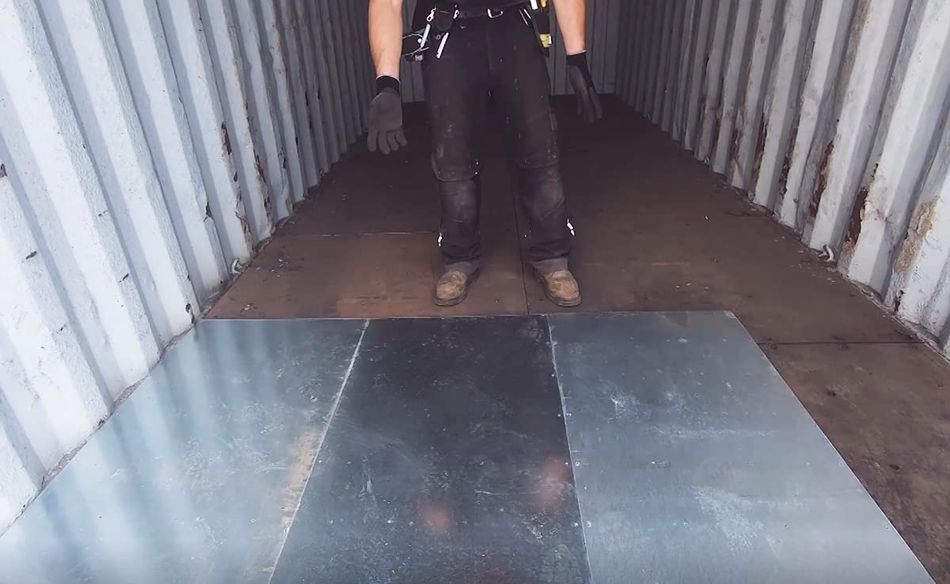Marine container Floor Maintenance: Materials, Care and Replacement

The floor of a shipping container is one of its key structural components, directly affecting cargo safety, loading efficiency, and the container’s lifespan. Despite its durability, the floor is exposed over time to moisture, chemicals, and mechanical stress, and requires periodic maintenance or replacement. In this article, we explore the materials used for container floors, proper care practices, and when replacement is necessary.
Main Floor Materials
The most common material used in standard container floors is plywood made from hardwood species, such as birch or tropical woods (e.g., apitong, meranti, or curupay). This plywood is treated with moisture-resistant and antiseptic agents, which makes it resistant to mold, insects, and humidity.
Other materials include:
- Laminated (Finnish) plywood – enhanced durability against wear and moisture.
- Steel flooring – used in specialized or industrial conversion containers.
- Composite and aluminum panels – less common but offer excellent durability.
Container Floor Care Tips
To extend the life of a container floor, consider the following practices:
- Regular cleaning: remove debris, chemicals, and moisture. Sand and dirt can accelerate wear.
- Moisture control: avoid long-term exposure to water. Ensure proper ventilation during storage.
- Protection from mechanical damage: use padding when loading sharp or heavy items.
- Apply protective coatings: wood oils, sealants, or antiseptic treatments can help prevent rot.
When Floor Replacement Is Required
Floor replacement is necessary in the following cases:
- Severe mechanical damage: cracks, holes, or deep wear that can’t be repaired.
- Rot or wood deformation beyond acceptable limits.
- Loss of structural integrity or airtightness.
Before replacing the floor, the old panels are removed and the supporting beams inspected. If needed, they are cleaned, treated, or replaced.
Floor Replacement Process
Replacement should be carried out at certified service facilities. All materials must comply with international ISO and CSC standards, especially for containers used in global transport.
The process involves:
- Removing the existing plywood sheets.
- Cleaning and treating the steel framework.
- Installing new floorboards (typically 28 mm thick), secured with bolts.
- Sealing joints and applying a protective finish.


